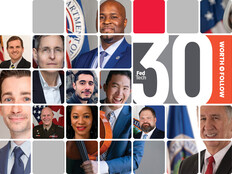FCC CIO Shares Practical Advice for Empowering Employees
When David Bray came to the Federal Communications Commission about a year and a half ago, he inherited much more than the title of CIO.
He took on a role that had previously been held by nine other people over the past eight years, at an agency with 207 different information technology systems for a workforce of 1,750 people.
“It’s a situation where there is a lot of need to modernize a lot of the old legacy systems,” Bray said during an online CxOTalk discussion on Monday. “More than half of our IT systems are more than 10 years old.”
Bray and his team are moving forward with a massive IT modernization project at a time when the FCC’s IT resources are stagnant. “We are trying to take an old Douglas plane and actually update it to a 777 while it’s in midair and flying at the same time,” Bray said of the work under way.
Modernizing systems with limited resources will force the FCC to make tough decisions: How should the agency go about cutting back the use of existing systems? Will some systems need to be turned off completely?
Practical Steps for Empowering Employees
Prioritizing resources is only part of the challenge. There’s also the human factor, which involves explaining the vision, engaging team members and the public, incorporating their feedback and giving them a license to be creative co-laborers when it comes to problem solving.
“If I can be a calming, non-anxious presence that says, ‘We will figure out how to do this; I welcome innovative ideas,’ that can help the team move forward in positive directions,” Bray said.
He highlighted three things that CIOs must provide their teams with:
1. Autonomy to bring their ideas to fruition.
2. Measurable progress updates.
3. A worthy cause that adds value for the public.
Every two weeks, Bray and his FCC team host a creative brainstorm session with other employees in the public sector, which Bray refers to as a support group for change agents. He has an open-office policy and makes clear to his staff that the best leaders have blind spots and that he depends on their diverse viewpoints to fill those gaps.
“I do tell people I’ll be their flak jacket,” Bray noted. If employees make a risk-based decision and it fails, “I’ll take the fall.”
Part of a CIO’s job is to empower employees, said Karen Evans, who served as the nation’s first de facto CIO in her former role as administrator of the Office of Electronic Government and Information Technology.
Evans, who also participated in the CxOTalk event, explained that CIOs should do more outreach, connect with the bureaus at their departments and bring innovative uses of technology to the secretary that can be expanded departmentwide.
“But the challenge and what happens in departments and agencies is we do process for process sake, and not necessarily for the result and the outcome,” Evans said.
CIOs must manage change on multiple levels, she added. Midlevel managers can stifle innovation if they don’t understand what’s in it for them. CIOs are charged with taking employee innovation through the layers of management and getting it institutionalized.
Bray agreed.
“A lot of what you are doing when you’re a CIO in any organization, is you are actually doing cultural change,” he said.









